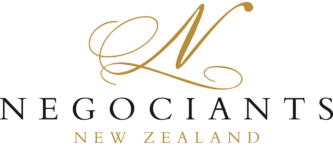 September 25, 2019, marks 200 years since the first planting of grapevines in New Zealand. From the humble beginnings of a vine planted in Northland, the New Zealand wine industry has grown to become a $1.83 billion export earner, with an international reputation for premium, diverse and sustainable wines.
September 25, 2019, marks 200 years since the first planting of grapevines in New Zealand. From the humble beginnings of a vine planted in Northland, the New Zealand wine industry has grown to become a $1.83 billion export earner, with an international reputation for premium, diverse and sustainable wines.
Reverend Samuel Marsden, Chaplain to New South Wales (1765-1838), records September 25, 1819, as
the day he planted a vine in the rich grounds of the Stone Store, Kerikeri in the Bay of Islands. These
pioneering vines were the very first to be planted into New Zealand soils, with New Zealand being one
of very few countries in the world where the exact date of the planting of the first vines is known,
making our story unique on the world stage.
Throughout the 19th and early 20th century, a significant number of European immigrants came to New
Zealand and set up vineyards in different regions. They each contributed to the early establishment of
the diverse wine regions of New Zealand. The New Zealand wine industry today consists of over 700
wineries and more than 600 grape growers, with the growing success of this industry depending
strongly on the commitment and passion of the people behind it.
Since the 1990s, there has been an evolution in the grape varieties that we see planted throughout our
regions. Sauvignon Blanc is now the most widely planted variety, accounting for 76% of total production,
followed by Pinot Noir and Chardonnay.
As we raise a toast to the past, we also look ahead to the future. The New Zealand wine industry is
dedicated to ensuring that we celebrate another 200 years, through a commitment to sustainability and
innovation that will protect the places that make our famous wines. Over 98% of New Zealand’s
vineyard producing area is now Sustainable Winegrowing New Zealand (SWNZ) certified – and this is
unmatched by any voluntary scheme around the world.
New Zealand Winegrowers will be marking the 200 year anniversary with an industry event in
Northland, including a ceremonial re-planting at the historic Stone Store, followed by a regional wine
tasting and dinner on the Waitangi Treaty Grounds.
In his diary, Marsden prophesied, “New Zealand promises to be very favourable to the vine, as far as I
can judge at present of the nature of the soil and climate. Should the vine succeed, it will prove of vast
importance in this part of the globe.” His prediction has been brilliantly fulfilled.
For further information contact:
Amber Silvester
Communications Manager, New Zealand Winegrowers
021 794 381
Editors notes:
- The first recorded wine was from James Busby in 1830s. Busby, the Crown’s Resident in New
Zealand lived in what is now called the Treaty House at the Treaty Grounds in Waitangi. James
Busby was the architect of the Treaty of Waitangi and is regarded as the first winemaker in New
Zealand. - In 1840, naval officer and explorer Jules Dumont D’Urville visited and was disappointed to find
Busby not in residence, but tasted a wine made by Busby. Onboard his ship, Astrolabe, Dumont
D’Urville wrote the first New Zealand wine review in his journal, “with great pleasure I agreed to
taste the product of the vineyard that I had just seen. I was given a light white wine, very
sparkling, and delicious to taste, which I enjoyed very much”.


 Simon Bell, the Representative for Colab Wine Merchants, presented a taste of Europe. There was a good turnout of 33 members and 3 guests. Everyone enjoyed the evening. It was a different style of meeting with lots of member interaction. Simon gave out larger glasses to demonstrate the difference using a large glass versus a small glass. It was an interesting evening with the tasting aimed for the layperson. There were 14 orders with a total of 96 bottles. Simon was pleased with the meeting and is keen to do another meeting. To revisit the wines included:q
Simon Bell, the Representative for Colab Wine Merchants, presented a taste of Europe. There was a good turnout of 33 members and 3 guests. Everyone enjoyed the evening. It was a different style of meeting with lots of member interaction. Simon gave out larger glasses to demonstrate the difference using a large glass versus a small glass. It was an interesting evening with the tasting aimed for the layperson. There were 14 orders with a total of 96 bottles. Simon was pleased with the meeting and is keen to do another meeting. To revisit the wines included:q

 This was a very enjoyable tasting. Cenna was a very knowledgeable presenter with a great relaxed style. She admitted to a few nerves to start with but was soon interacting nicely with the members. The wines presented were great wines at a good value for money. The tasting was a good night.
This was a very enjoyable tasting. Cenna was a very knowledgeable presenter with a great relaxed style. She admitted to a few nerves to start with but was soon interacting nicely with the members. The wines presented were great wines at a good value for money. The tasting was a good night.






